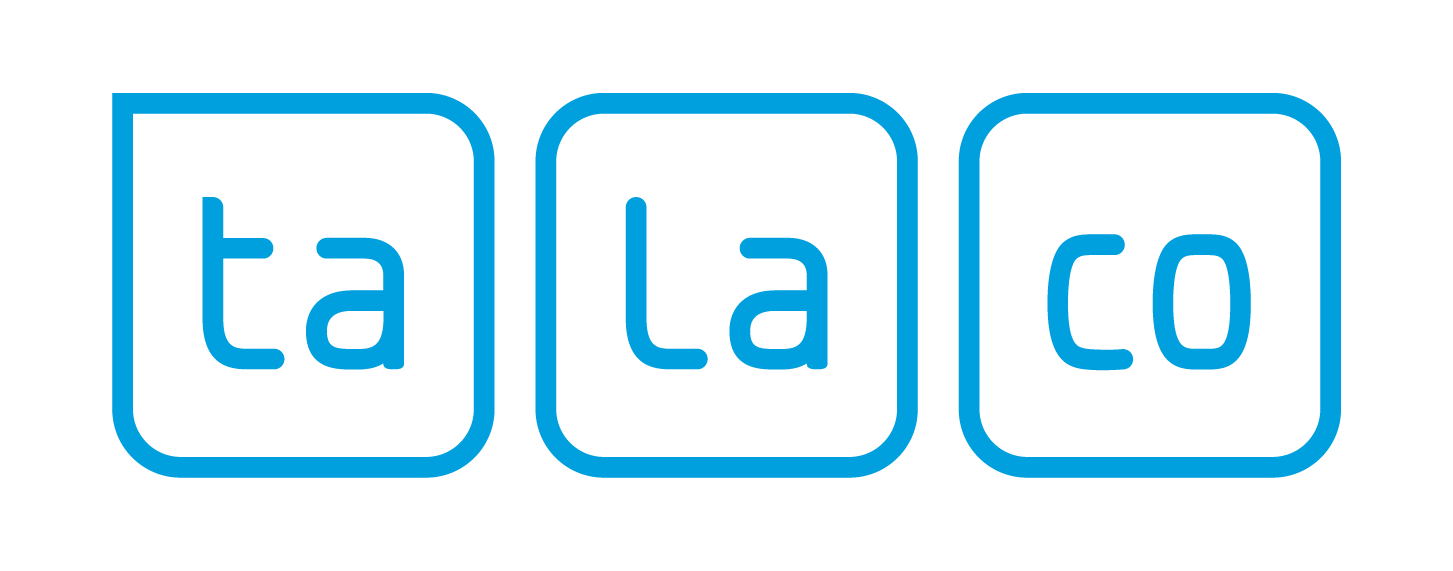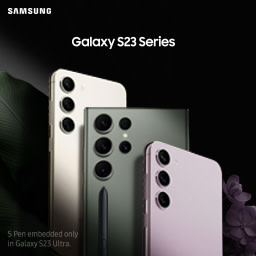Samsung made an official declaration of the Galaxy S23 series during its Galaxy Unpacked occasion today. This article provides an overview of the upgrades and novelties introduced with the Galaxy S23 series, such as modified design, fresh color options, advanced specifications, and numerous other features.
A Quick Look at the Innovations in the Samsung Galaxy S23 Series
The latest models of flagship smartphones tend to have fewer changes from one year to the next compared to earlier models. Despite this, there are still some significant upgrades in the Galaxy S23 series as compared to the S22 series, including:
- Redesigned Look: The Galaxy S23 and S23 Plus have adopted a new design inspired by the Galaxy S22 Ultra, featuring a separate housing for all three lenses and a more angular body. The S23 Ultra, on the other hand, mostly retains its previous look.
- Qualcomm’s Latest: The Galaxy S23 series features Qualcomm Snapdragon 8 Gen 2 in all major markets, whereas in the past, only some regions received this chip.
- Improved Camera: The Galaxy S23 Ultra has received a major upgrade to its camera, featuring a 200MP wide camera, up from the 108MP shooter on the S22 Ultra. The S23 and S23 Plus camera specs are unchanged from the previous year. Additionally, all three models now have a new 12MP front camera, replacing the previous 10MP or 40MP selfie cameras.
- Longer Battery Life: The Galaxy S23 and S23 Plus have received 200mAh upgrades to their battery capacity, bringing them to 3,900mAh and 4,700mAh, respectively. The Galaxy S23 Ultra battery remains unchanged from the S22 Ultra, at 5,000mAh.
- Brighter Display: The Galaxy S23 now features a brighter display, with a peak brightness of 1,750 nits, matching the Plus and Ultra variants.
What are the updated color options, models, and dimensions for the Galaxy S23?
The Samsung Galaxy S23 series comes in three models: the compact Galaxy S23, the larger Galaxy S23 Plus, and the top-of-the-line Galaxy S23 Ultra. The series will be offered in several configurations with different storage and RAM options. The standard colors available for all models are Phantom Black, Cream, Lavender, and Green. Additionally, exclusive colors can be found through Samsung’s online store.
Samsung has made alterations to its design style.
Samsung has made some alterations to its design aesthetics. The Galaxy S23 and S23 Plus are adopting a more angular appearance, borrowing the separate camera lens housing style from the Galaxy S22 Ultra. On the other hand, the Galaxy S23 Ultra will retain a similar appearance to the previous year’s model. Samsung’s design philosophy hasn’t gone through significant modifications over the years, but the Galaxy S22 Ultra marked a departure from the norm with its boxier design and other unique features, including S Pen support. This year, Samsung is incorporating these changes in the Galaxy S23 and S23 Plus, but leaving the Galaxy S23 Ultra largely unchanged.
Both models are receiving a revamp in terms of design, with boxier shapes and a revised camera lens panel in line with the Galaxy S22 Ultra. These changes make the Galaxy S23 and S23 Plus look noticeably different from their predecessors and the overall look of the series has been refreshed. The new design gives these models a modern and updated appearance, separating them from their older counterparts. The differences are expected to be well received by users looking for a fresh take on the Galaxy lineup.
The design of the Samsung Galaxy S23 and S23 Plus has been altered, with a slightly boxier shape and a change in the camera cut-outs. The camera cut-outs are now separate, rather than being housed in a single unit, and the phones are slightly wider than their predecessor, though the weight remains the same. The general changes to the design are expected to provide a more comfortable feel for the user.
In terms of durability, the Galaxy S23 series will feature Gorilla Glass Victus 2, which is said to be able to withstand drops of up to one meter onto concrete. This new standard is an improvement over previous models, which often failed after drops of half a meter or less. The phones will also be IP68 certified, providing water and dust resistance.
Information regarding the display of the Samsung Galaxy S23: dimensions, features, and other details.
The display specifications of the Samsung Galaxy S23 series remain mostly unchanged. The Galaxy S23 features a 6.1-inch Dynamic AMOLED display with a 19.5:9 aspect ratio and FHD+ resolution of 2,340 x 1,080, and comes equipped with a 120Hz adaptive refresh rate. The Galaxy S23 Plus also has similar display specs, but with a larger 6.6-inch AMOLED screen. The Galaxy S23 Ultra has the most advanced display among the three models, sporting a 6.8-inch edge display AMOLED panel with a QHD+ resolution of 3,088 x 1,440 and an adaptive refresh rate that can vary between 1Hz and 120Hz.
The S23 Ultra has a significant improvement in its camera capabilities.
The S23 series from Samsung continues the company’s tradition of producing high-quality camera phones. The Galaxy S23 and S23 Plus do not bring about significant changes in camera technology, but the cameras on the S22 series were already very good, so this is not surprising. Both phones have the same 50 MP sensor size as last year, but with a four-time increase in color range compared to the S22 series. It will also be possible to take 50 MP RAW files for those who want more control over their photography. The S23 series features a new and improved AI image signal processor, enhanced Nightography capabilities, and a brand new 12 MP selfie camera. The rest of the sensors, including the 12 MP ultrawide lens and the 10 MP telephoto lens with 3x optical zoom and 30x digital zoom, remain unchanged from the previous year.
Surprisingly, the Galaxy S23 Ultra has the same 12 MP selfie camera as the S23 and S23 Plus, which appears to be a downgrade from the 40 MP sensor in the S22 Ultra. However, Samsung claims that the algorithms and software have improved from last year and that the new camera will perform just as well, if not better. Until we have the opportunity to test the S23 series, it is unclear how well the new selfie camera will perform compared to the S22 Ultra.
The Galaxy S23 Ultra might have a different approach to its front-facing camera, but it will still be ahead of the competition in terms of its rear camera. The Galaxy S23 Ultra will feature a 200MP main camera, a substantial improvement over the already impressive 108MP camera on the S22 Ultra. Just like the S22 Ultra, the S23 Ultra utilizes pixel binning technology to produce clearer images, and as a result, the actual megapixel count will default to 12MP. This may sound like a downgrade, but pixel binning combines information from nearby pixels to create a clearer, higher-quality image than what the megapixel count would suggest. However, you still have the option to take unbinned images and take advantage of the full 200MP.
The Samsung Galaxy S23 and S23 Plus are expected to have some camera improvements in addition to their new design, thanks to the use of the Snapdragon 8 Gen 2 chip. This chip supports Cognitive ISP, which enables faster semantic segmentation and better identification of objects within an image. Furthermore, Qualcomm and Samsung are working together to maximize the performance of the high-megapixel sensors, so you can expect better results overall.
What can be said about the performance and battery life of the device?
The Samsung Galaxy S23 series will feature a slightly altered Qualcomm Snapdragon 8 Gen 2 across all models, with the Cortex-X3 clocked at 3.36GHz instead of the standard 3.19GHz. Additionally, the GPU clock speed has been increased from 680MHz to 719MHz. While this change may not result in a significant performance improvement compared to the regular Snapdragon 8 Gen 2, it will give Samsung the ability to advertise the phone as the fastest when it is launched.
This year, all versions of the Samsung Galaxy S23 series will be equipped with the Snapdragon processor, instead of the Exynos. This change was previously announced by Samsung and aligns with their preference for Qualcomm. As for the S23 Ultra, it sets itself apart from the other two models in some ways.
The Galaxy S23 Ultra comes in either 8GB or 12GB RAM variants, depending on the model. The storage capacity has been increased from last year with options of 256GB, 512GB, and 1TB. Despite having the same 5,000mAh battery as its predecessor, the S23 Ultra is expected to have improved performance due to updates to its processor and other components. Our previous review of the S22 Ultra found it had average battery life, and it seems like the S23 Ultra will have a similar outcome.
The Galaxy S23 and S23 Plus both feature the overclocked Snapdragon 8 Gen 2 processor with 8GB of RAM. The Galaxy S23 has a storage capacity of 128GB or 256GB, while the Galaxy S23 Plus starts at 256GB but can also be upgraded to 512GB for those needing more space. In response to the disappointing battery life on the previous models, the Galaxy S23 and S23 Plus have increased battery sizes of 3,900mAh and 4,700mAh respectively. All three phones have fast charging capabilities, but the S23 is limited to 25W wired and 15W wireless charging. The Galaxy S23 Plus and S23 Ultra, on the other hand, boast much faster 45W wired charging, though wireless charging remains at 15W for both models.
The new S series from Samsung will come with the Samsung One UI 5.1 pre-installed.
The Galaxy S23 series will run on Android 13 with the Samsung One UI 5.1 user interface. The latest version promises to bring several enhancements, such as the ability to use a video as the lock screen wallpaper, expanded customization options, and a new widget system that allows for better organization through drag-and-drop. There is much more to explore with this software, and we will provide a closer look and our hands-on experience with it in the near future.
Samsung is well-known for providing great software support for its Android devices, and the S23 series is no exception. Users can expect four operating system upgrades and five years of security updates, which is a testament to Samsung’s commitment to delivering a seamless user experience.


